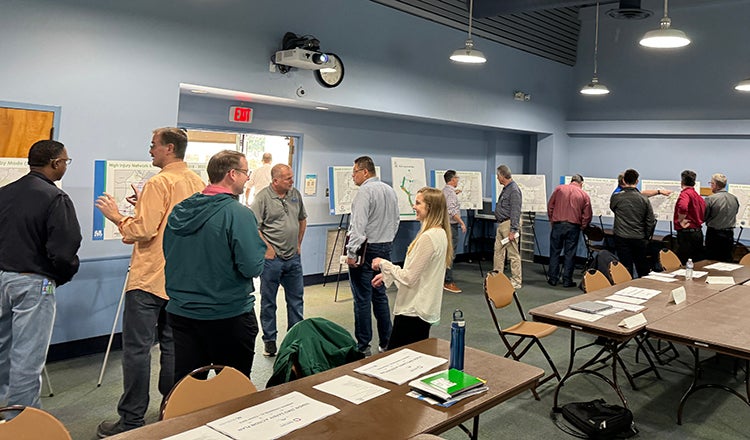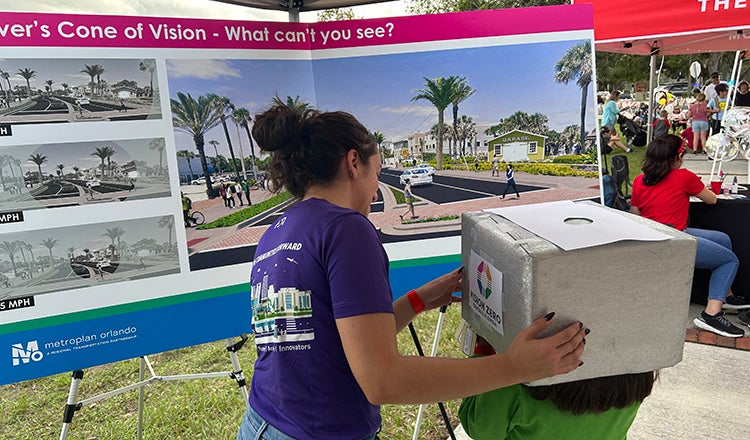Vision Zero Central Florida Safety Action Plans

Vision Zero Central Florida Safety Action Plans
A Community-Focused Approach To Eliminating Deaths and Serious Injuries on Central Florida Roads
- Collaborating with agencies and communities to eliminate fatal and serious injury crashes
- Analyzing crash data to identify high-risk road segments
- Leading public engagement to gain road user insight and educate on the goal of zero deaths and serious injuries
- Identifying appropriate safety countermeasures to implement on roads to achieve zero deaths and serious injuries
- Specifying priority streets and intersections to achieve greater safety impact
Each year, several hundred people die and thousands more are seriously injured in traffic crashes on Central Florida roads. Dozens of those deaths are in Seminole County, home to nearly 500,000 people. While progress has been made, the County and MetroPlan Orlando have committed to additional action to pursue a goal of eliminating road deaths and serious injuries.
HDR worked with both partners to develop a comprehensive Vision Zero Safety Action Plan. We worked directly with MetroPlan Orlando, Central Florida’s metropolitan planning organization, along with Seminole County and six cities within the county to develop individual safety action plans tailored to the needs of each community. This work was funded by a $3.79 million Safe Streets and Roads for All federal grant awarded to MetroPlan Orlando in 2023.
Driving a Community-Centered Approach
Getting to the root of eliminating deaths began with a massive data-driven and community outreach effort in Seminole County and six of its cities: Altamonte Springs, Lake Mary, Longwood, Oviedo, Sanford and Winter Springs.
Our team reviewed and analyzed road and crash data from each community to identify roads and intersections that posed the highest crash risk. Each problem area was then weighted and assigned a score to develop a high-injury crash network – called “HIN” for short – that highlighted important problem areas.

Additionally, public input gathered by our strategic communications professionals during community events, open houses and popup events added vital context to high crash areas. A safety and equity analysis of Seminole County and the various communities revealed that a disproportionate number of crashes occurred in USDOT designated disadvantaged areas. Together, this study, road data, and public input were used to determine priority areas for future safety improvements and identify risks that could arise in the future.

Achieving Safer Streets by Getting to Zero
Multidisciplinary working groups comprised of members with varying expertise, including police, fire, public health, city planning and public works backgrounds were formed in each community to develop and refine high priority areas. Once approved, the teams chose which recommended safety countermeasures would be included in each of their final safety action plans. They include:
- Traffic signal upgrades
- Additional signage and road striping
- Speed management efforts
- Improved pedestrian safety treatments, like added sidewalks and flashing beacons to alert traffic
- Added bicycle safety elements, such as separated bike lanes and bikeways
- Raised medians and rumble strips
- Roundabouts
- Lane repurposing
Our team also assisted with the development of 20 safety-related actions in each plan with many requiring policy changes or contribution from staff for implementation, rather than construction or other high-cost initiatives. Additionally, who within each agency may take lead or be involved with implementation of the action, and how to measure progress in implementing the actions. A few examples include:
- Meet with first responders regularly
- Coordinate safety improvements with utility projects
- Install speed feedback signs
- Partner with motorcycle safety organizations to emphasize helmet usage
- Implement a countywide “Do Not Disturb” policy for staff driving government vehicles
Once the action plans were reviewed and approved by each working group in summer and fall 2024, we provided support through the official adoption of each Vision Zero plan by the governing board of each community. Members of each working group are now tasked with carrying out implementation of the actions in their community’s plan to continue to increase momentum toward Vision Zero.

